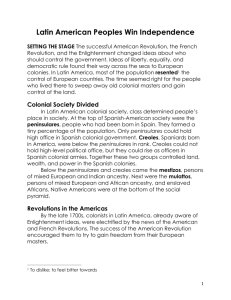24.1 Latin American Peoples Win Independence
advertisement
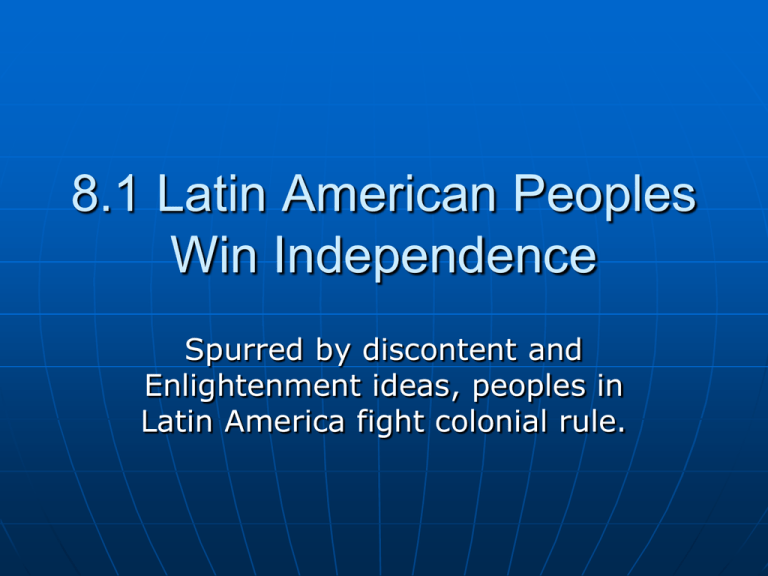
8.1 Latin American Peoples Win Independence Spurred by discontent and Enlightenment ideas, peoples in Latin America fight colonial rule. Colonial Society Divided A Race and Class System • Latin America has social classes that determine jobs and authority Peninsulares—born in Spain, they head colonial government and society Creoles—American-born Spaniards who can become army officers Mestizos—have both European and Native American ancestry Mulattos—have both European and African ancestry Slaves and Native Americans are at the bottom of society Revolutions in the Americas Revolution in Haiti • Haiti is the first Latin American territory to gain freedom • Toussaint L’Ouverture leads slave revolt against the French (1791) • Toussaint eventually dies in a French prison in 1803. Revolutions in Haiti Haiti’s Independence • Jean-Jacques Dessalines declares Saint Domingue a country in 1804 • Saint Domingue becomes first black colony to win independence • Renames Haiti, means “mountainous land” in the Arawak language • Emperor Jacques is assassinated in 1806 by disaffected members of his administration. Creoles Lead Independence The Spread of Enlightenment Ideas • Enlightenment ideas inspire Latin American revolutionaries Creole Leaders • Simón Bolívar—wealthy Creole leads Venezuela in revolution • José de San Martín—leader of Argentinean revolutionary forces 1. Bolivar’s 1807 return from Europe by way of the United States allowed him to study the American system of government. 2. In 1810, Bolivar went to London to seek support for the revolution in Latin America. At the same time, he studied British institutions of government. Portraits of Bolivar and San Martin Creoles Lead Independence Bolívar’s Route to Victory • Venezuela declares independence in 1811; Bolivar wins war by 1821 San Martín Leads Southern Liberation Forces • Argentina is independent in 1816; San Martin helps free Chile • San Martin differs power of military to Bolivar. • Bolívar’s and San Martín’s armies drive Spanish out of Peru in 1824. Mexico Ends Spanish Rule A Cry for Freedom • Padre Miguel Hidalgo—priest who launches Mexican revolt (1810). • 80,000 Indian and Mestizo followers march on Mexico City • Jose Maria Morelos— leads revolt after Hidalgo’s defeat, but loses • Both Hidalgo and Morelos were executed. An artistic representation of the execution of Jose Maria Morelos in 1815. Mexico Ends Spanish Rule Mexico’s Independence • Mexican creoles react; Iturbide (a Mexican General) declares Mexico independent (1821) • Iturbide reigns briefly as emperor until March 1823. • In 1823, Central America breaks away from Mexico Agustín de Iturbide Iturbide is credited with designing the first Mexican flag. (1821-1823) Today’s Flag of Mexico The tri-color flag is still used, and the presence of the eagle is also used in the modern flag of Mexico used since 1968. Brazil’s Royal Liberator A Bloodless Revolution • Napoleon invades Portugal; royal family moves to Brazil (1807) • Portuguese court returns to Portugal after Napoleon’s defeat (1815) The Imperial Palace in Rio de Janeiro where King John VI of Portugal had transferred the Portuguese Royal Court to Brazil. Brazil’s Royal Liberator • Portuguese prince Dom Pedro stays behind in Brazil Pedro I of Brazil Dom Pedro accepts Brazilian’s request to rule their own country He officially declares Brazil’s independence (September 1822) • By 1830, nearly all of Latin American regions win independence Flag of the independent Empire of Brazil under Pedro I
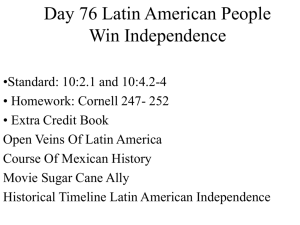
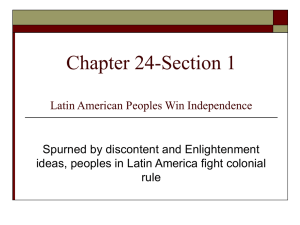
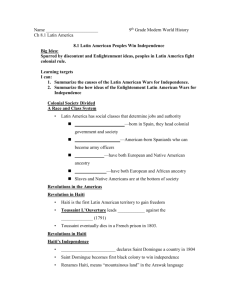
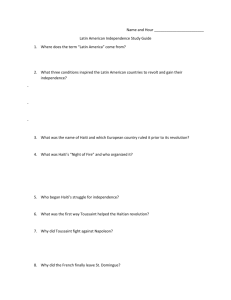
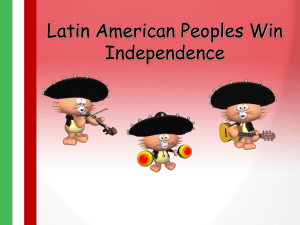
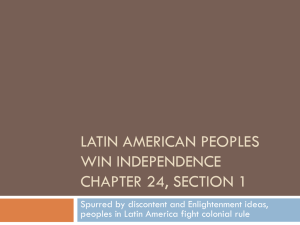
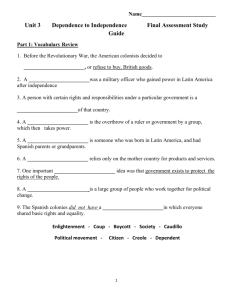
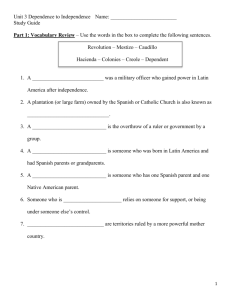
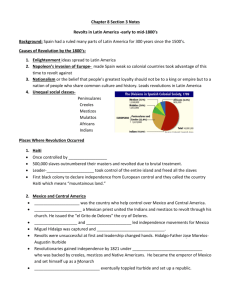
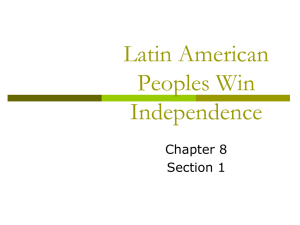
![Lesson 4.3 [WH] - MKHS](http://s3.studylib.net/store/data/008422552_1-b5d54a87b240306642b68067bfe9553e-300x300.png)
